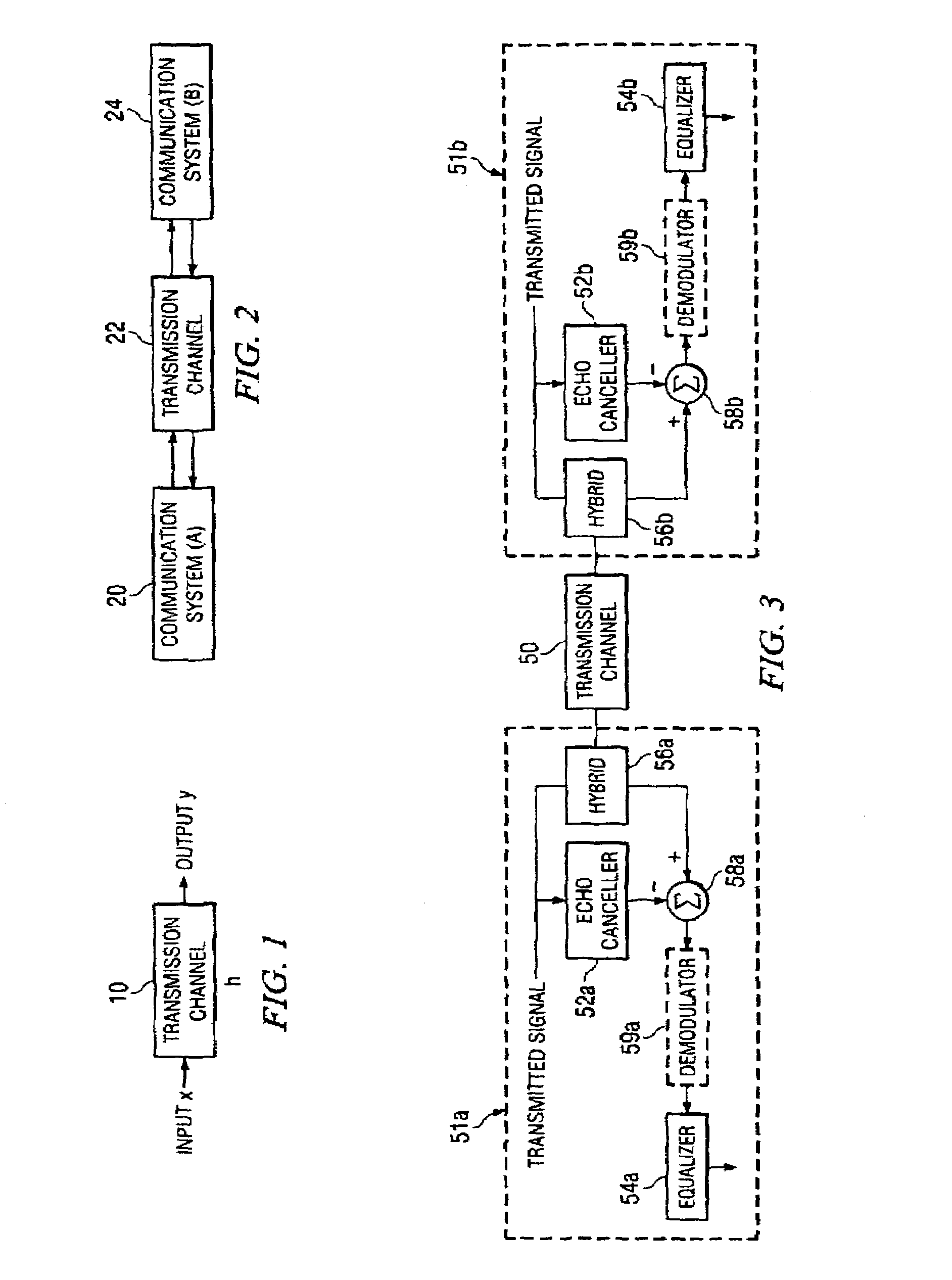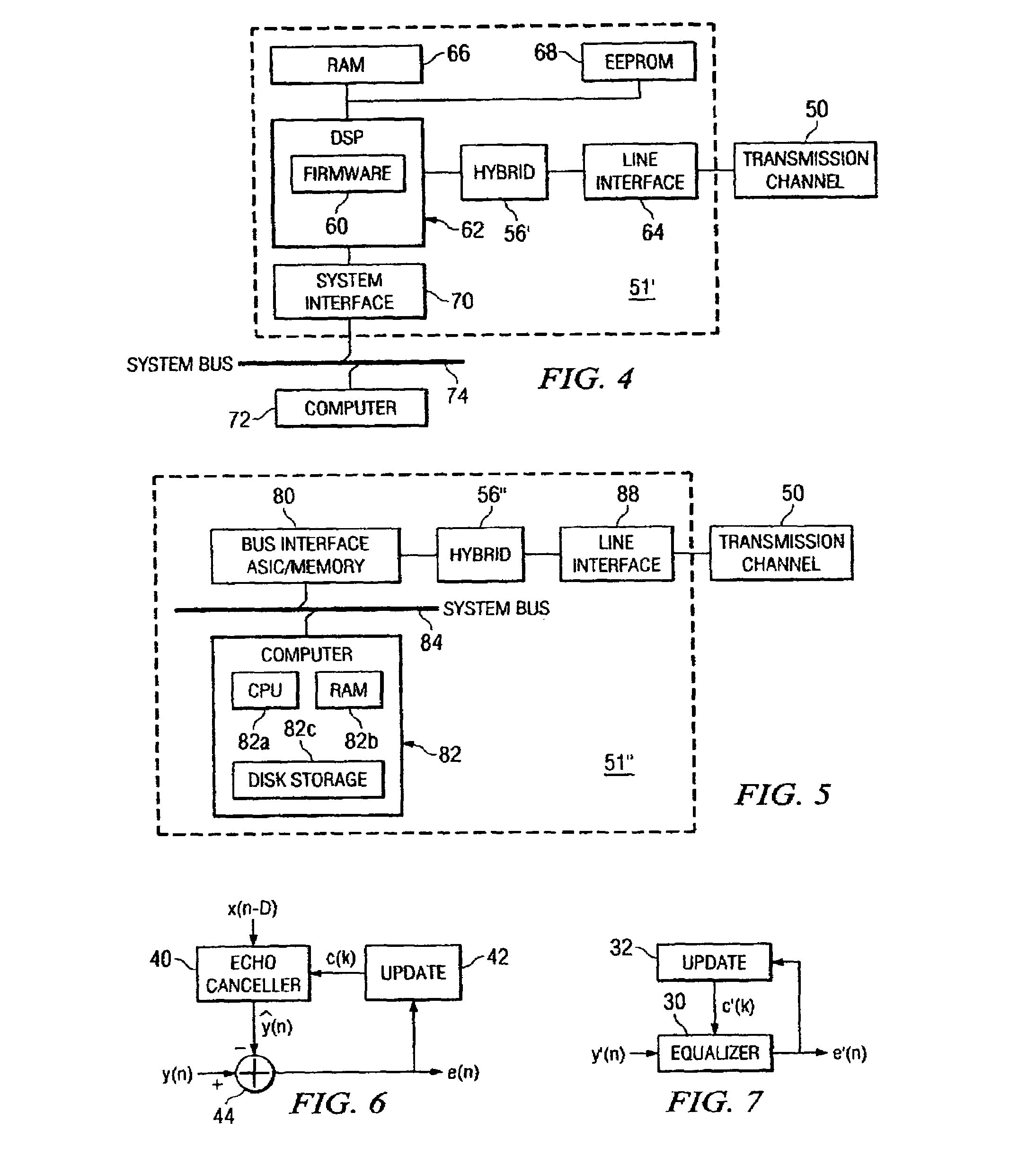Rapid identification of transmission media channel characteristics
a transmission media and characteristic technology, applied in the field of noise reduction and interference, can solve the problems of delaying data transmission, degrading communication system performance, echoing time delay, etc., and achieve the effect of compensating or reducing the effects of channel impairment, reducing or eliminating the effects of noise and impairmen
- Summary
- Abstract
- Description
- Claims
- Application Information
AI Technical Summary
Benefits of technology
Problems solved by technology
Method used
Image
Examples
Embodiment Construction
also include generating a training signal sequence and transmitting the training signal sequence over a transmission media channel to generate an observed or measured output signal. A minimized difference value between the observed or measured output signal of the channel and a signal value representation of convolution of the training signal sequence and the unknown impulse response of the channel, together with the training signal sequence, and the observed or measured output signal are used to compute an initial impulse response of the channel. Further refinements or fine-tuning of the impulse response then can be done using other known convergence techniques.
[0017]The present invention compensates for or reduces the effects of channel impairments in a communications system. To do this, the present invention estimates or identifies the transmission media channel's characteristics. The technique can be used with modems or other communications systems, and is applicable for a varie...
PUM
 Login to View More
Login to View More Abstract
Description
Claims
Application Information
 Login to View More
Login to View More - R&D
- Intellectual Property
- Life Sciences
- Materials
- Tech Scout
- Unparalleled Data Quality
- Higher Quality Content
- 60% Fewer Hallucinations
Browse by: Latest US Patents, China's latest patents, Technical Efficacy Thesaurus, Application Domain, Technology Topic, Popular Technical Reports.
© 2025 PatSnap. All rights reserved.Legal|Privacy policy|Modern Slavery Act Transparency Statement|Sitemap|About US| Contact US: help@patsnap.com



